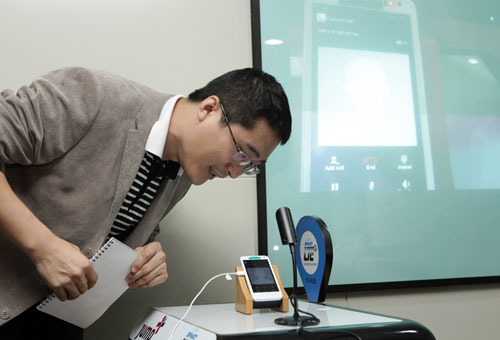SMART Communications, Inc. has made its LTE service dual-frequency by deploying its 1800 megahertz (MHz) band during the Asian Carriers’ Conference (ACC).
Smart LTE now runs on the 2100 MHz and 1800 MHz bands, said PLDT and Smart Network and IP Systems head Rolando Peña. He said Smart is the first telecommunications company in the country to deploy the service in multiple frequencies. The deployment is also consistent with the company’s operation–it offered 3G in multi-frequencies, he said.
Peña said the deployment improves the quality of the service and user experience as well as offers people choice.
“Why do we need to do that? LTE today has no standard frequency to operate in…we are giving the customers the choice. Anyway, we have the equipment, we have the capability, we have the system and we have the frequency asset. Why don’t we use it?” Peña said during an interview at the sidelines of the ACC.
Maximizing use of assets
“We are maximizing the use of our asset. Because the system has been modernized, we are now reaping the fruits, getting the value of our investments,” he said.
Smart LTE was launched nationwide last Aug. 25. LTE offers speeds of up to 100Mbps. The service now covers major areas in Metro Cebu with the deployment based on usage data. Peña said LTE can be accessed in places where there is heavy usage and demand for data connectivity like hotels and malls.
He said, however, that Smart can quickly roll out the service because of the PLDT group’s recently completed modernization program.
Starting with their LTE deployment, the company used a system called “software-defined radio” wherein a single system can be used to run different modes of communications such as 2G, 3G or LTE. Previously, specific equipment was needed for a specific mode of communication.
Peña said new deployments, in a way, is a matter of turning on a switch.
He stressed, however, that the backbone of the system is equally important.
“In the PLDT group we have the most extensive fiber optic network in the country. We are close to 60,000 kilometers of fiber optic in the ground today. And we are even bringing the fiber to the home,” Peña said. He said they are adding “thousands” to the network every week.
He said LTE adoption is fast because improvements in fiber connectivity and even home DSL connections spur people to seek the same experience in mobile.
Faster adoption
“If it took six to 10 years for 3G to become what it is now, we think with LTE it will take two to three years. It will take half the time,” he said.
Smart LTE is offered under Plan 3500 with a 10GB allocation. The system can be used through USB dongles but Peña said they will soon launch an LTE-capable phone. He said the pricing is comparable to what is being offered in the region on a per-gigabyte basis.
He said the availability of a high-speed network has a “big impact on business,” which is keenly looking into LTE.
He said that complementing the improvement in the network connectivity is the setting up of a distributed content delivery network (CDN) that will store commonly-accessed content in facilities in the country to speed up downloads and access.
Peña said that with the distributed CDN, users will be able to view content faster and the company will be able to save on connectivity costs. Peña said the facility is located in Manila but a similar system will be set up in Cebu and other places before the year ends.
He said he is also pushing for storing local content within the country to speed up downloads and improve the user experience.
“Locally-generated content should be locally stored,” he said.
Peña also said that before the year ends, consumers will be able to use their data plans within the solutions provided by both Smart and PLDT.
PLDT and Smart both have Wi-Fi zones with corresponding subscription plans.
“Within the year all of those hotspots can be used by our Smart customers with data plans and PLDT users with DSL plans,” he said.
Peña said the bundles will be simplified into Home, Mobility and Hotspot under one account.
“Broadband connectivity can be within any of the three means. The theme is providing broadband connectivity to anyone, anywhere in phones, at home, in the office, at leisure, in the mall, anywhere,” he said.
The post Smart LTE now dual-frequency appeared first on Leon Kilat : The Tech Experiments.

 ZALORA Philippines—the country’s first fashion retail website carrying a wide range of local and international brands for men, women, and kids—helps you beat the holiday rush with its Gift Ideas tab featuring present-worthy items for everyone in your Christmas gift list.
ZALORA Philippines—the country’s first fashion retail website carrying a wide range of local and international brands for men, women, and kids—helps you beat the holiday rush with its Gift Ideas tab featuring present-worthy items for everyone in your Christmas gift list.
